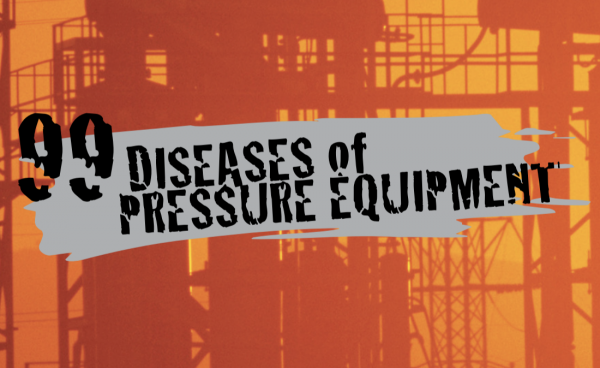Graphitization is a form of material degradation occurring when the microstructure of some carbon and low alloy steels breaks down after long exposure to elevated temperatures (825 - 1300 F), causing the metal to weaken and be susceptible to cracking failures. The steel tends to break down to form iron and carbon (graphite); the latter of which will migrate to the material’s grain boundaries forming graphite nodules, which are what causes the metal to become brittle, losing strength, toughness, creep resistance, and ductility.
Some of the more common failures associated with graphitization of components include brittle failures of welded carbon-molybdenum steel pipes and boundary components like high-energy piping and boiler tubes failing. Unfortunately, where it is a problem, graphitization is not something that you can do very much about aside from lowering operating temperatures or using different materials. Some processes however, require operating temperatures of 825 - 1300 °F and are best conducted using low alloy steels.
Material selection is the paramount for avoiding graphitization failures. Metallographic analysis of coupons cut from the walls of susceptible equipment is effective in determining if graphitization may be occurring.
Graphitization is a mechanism that engineers and inspectors need to be familiar with and know methods of detection and prevention.
Related Topics
- Brittle Fracture
- Carburization
- Cavitation
- CO2 Corrosion
- Cooling Water Corrosion
- Corrosion Fatigue
- Corrosion Under Insulation (CUI)
- Cracking
- Decarburization
- Embrittlement
- Erosion Corrosion
- Fatigue (Material)
- Flue Gas Dew Point Corrosion
- Green Rot
- High Temperature Hydrogen Attack (HTHA)
- High-Temperature Creep
- Hydrochloric (HCl) Acid Corrosion
- Hydrofluoric (HF) Acid Corrosion
- Hydrogen Embrittlement
- Hydrogen Stress Cracking
- Liquid Metal Embrittlement (LME)
- Metal Dusting
- Microbiologically Influenced Corrosion (MIC)
- Naphthenic Acid Corrosion (NAC)
- Phosphoric Acid Corrosion
- Pitting Corrosion
- Spheroidization (Softening)
- Stress Assisted Corrosion
- Sulfidation Corrosion
- Sulfuric Acid Corrosion
- Thermal Fatigue
- Vibration-Induced Fatigue
- Wet H2S Damage
Relevant Links
Topic Tools
Share this Topic
Contribute to Definition
We welcome updates to this Integripedia definition from the Inspectioneering community. Click the link below to submit any recommended changes for Inspectioneering's team of editors to review.
Contribute to Definition



















